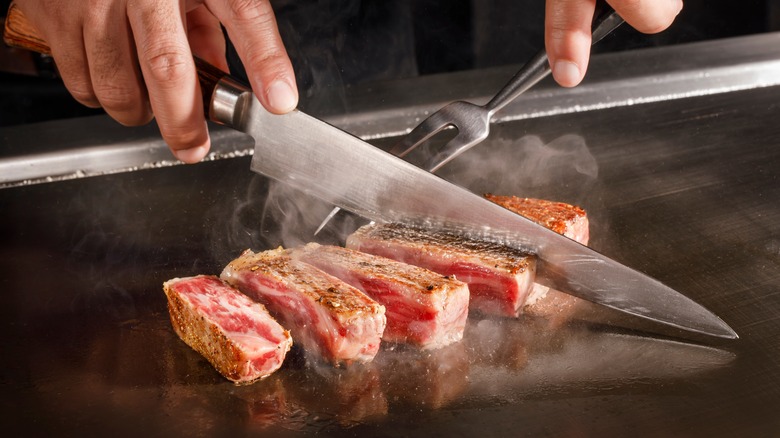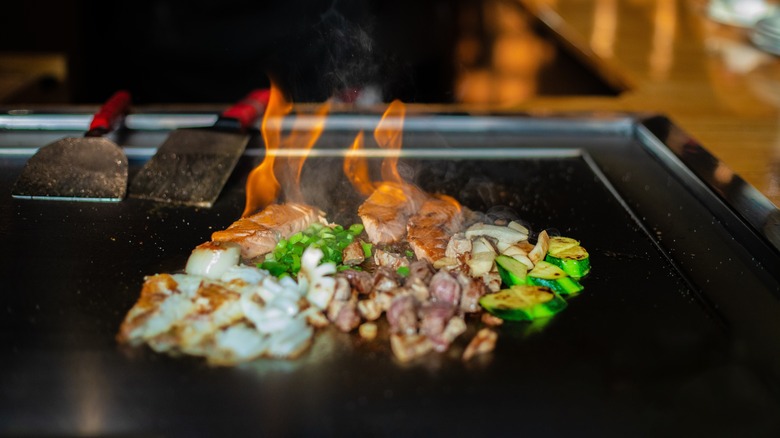The Top Thing To Look For In A Home Hibachi Grill, According To An Expert
Who doesn't love hibachi-style dinner? Sadly, this kind of meal is typically only reserved for nights out at one of the best hibachi restaurants. That is, unless you decide to invest in a hibachi grill of your own. But just like any grill or cooking appliance, hibachi grills offer a vastly different cooking experience to your usual stovetop range. To help our readers know what to look for, we spoke with chef Steve, a mobile hibachi specialist and owner of Chef Steve Creations. He gave us the rundown of what to look for in an at-home hibachi grill. Basically, Steve's recommendation is to look for quality practical features and not be misled in thinking the most expensive grill is necessarily the best.
Chef Steve notes that the burners are pretty much the most important element of your griddle. He advises, "It is essential to consider the number of burners, as it can impact your cooking experience. A minimum of four burners is recommended, as it allows for versatility in cooking various foods in a shorter time frame." Even though everything is all on one cooktop, cooking the best steak possible on a hibachi grill usually needs a considerably higher heat than, say, an onion and a couple of shrimp. More burners equals more flexibility on temperatures as you cook. If you plan to use the grill outdoors, Steve also recommends buying a model with wind guards which "help maintain maximum temperature and prevent wind from disrupting the grill's performance."
The most expensive is not necessarily the best
Another key mistake people make when purchasing a hibachi grill is assuming the priciest model is the best, says chef Steve. Take your time to read reviews, and identify the features that really matter to you instead of following the pricetag. Not sure which brand to look for? Steve says, "In my experience, the Blue Rhino brand has proven to be a reliable option compared to the popular Blackstone brand," adding, "Its durability, mobility on wheels, ease of cleaning, and longevity of over four years without any issues have made it a preferable choice for me."
As a technical note, there is a difference between teppanyaki and hibachi. The hibachi grills discussed with chef Steve refer to a flat griddle top, propane-powered grill — typical of what we see in restaurants. Traditionally, these are actually teppanyaki grills, while hibachi grills are charcoal-powered portable grills. But because most hibachi restaurants are indoors, the charcoal grills couldn't be used, especially to serve large quantities of food to hungry groups. Now, in the U.S., hibachi is used synonymously with teppanyaki griddle grills.

